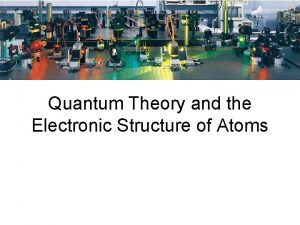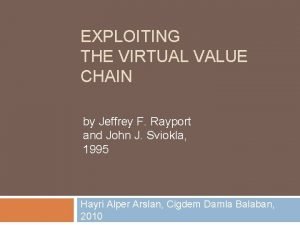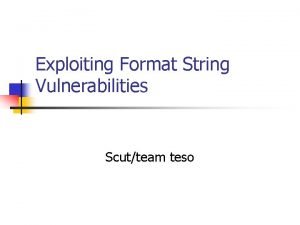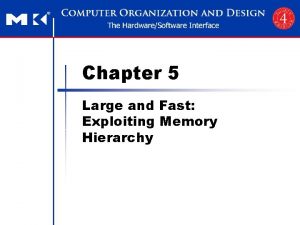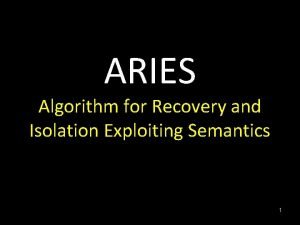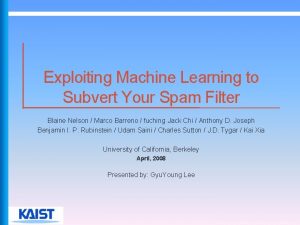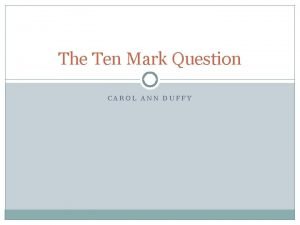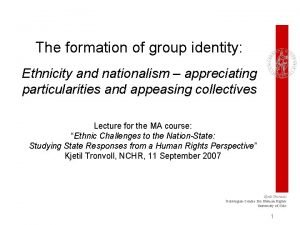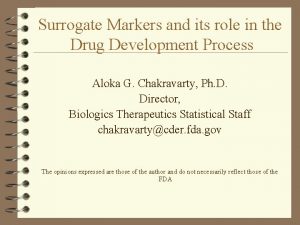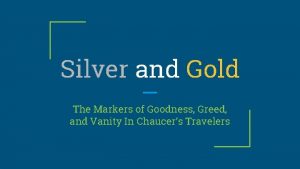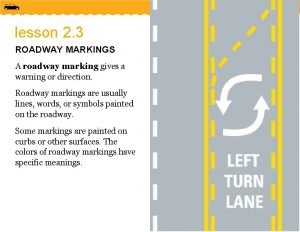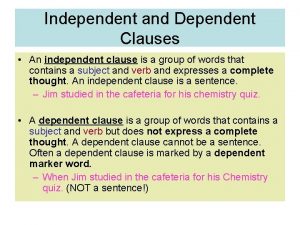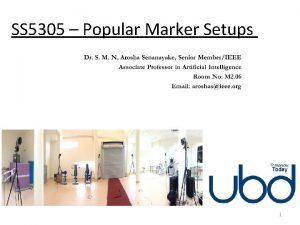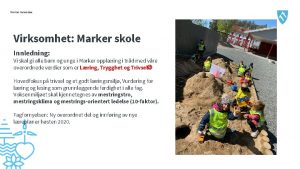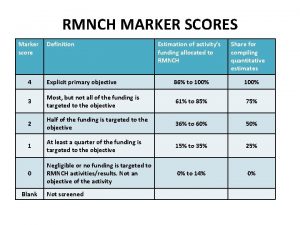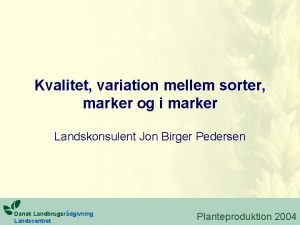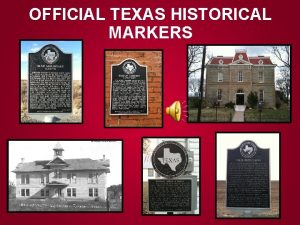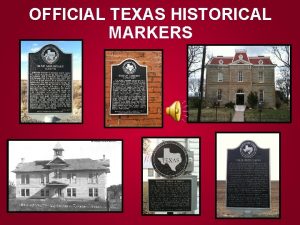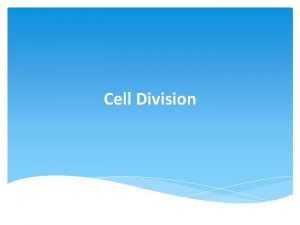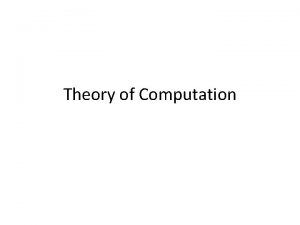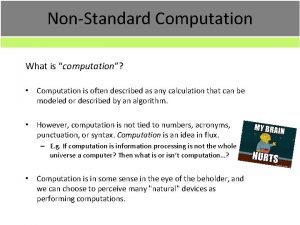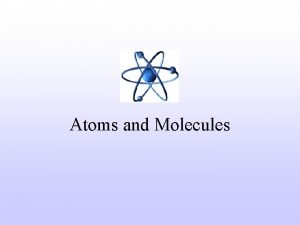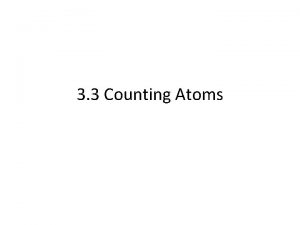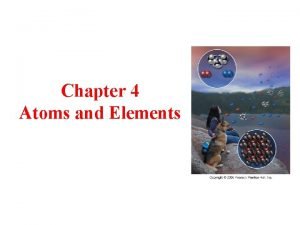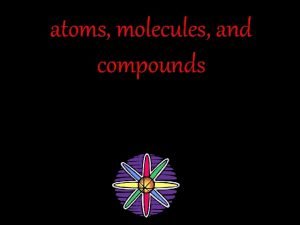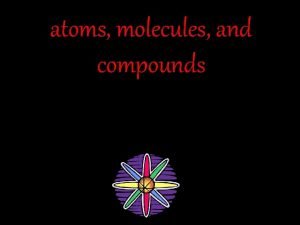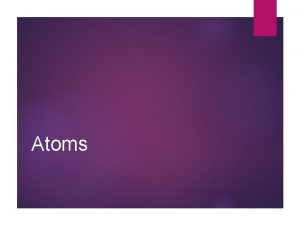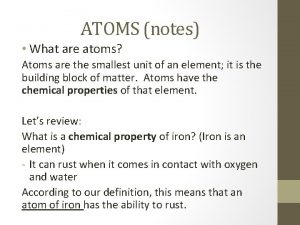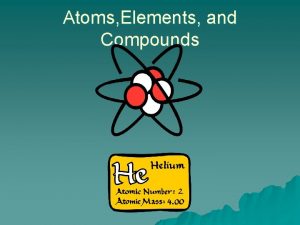Exploiting quantum control for quantum computation Marker atoms



![Present situation [Jaksch et al. 1999, Bloch et al. experiment 2003] sensitive to magnetic Present situation [Jaksch et al. 1999, Bloch et al. experiment 2003] sensitive to magnetic](https://slidetodoc.com/presentation_image/aaadafa775a60fe8cc47efa9ca06734a/image-4.jpg)


![Coupled-channel CI model [Mies et al. 2000] State Equations of motion Monday, 19 July Coupled-channel CI model [Mies et al. 2000] State Equations of motion Monday, 19 July](https://slidetodoc.com/presentation_image/aaadafa775a60fe8cc47efa9ca06734a/image-7.jpg)




![Looking for resonances [Marte et al. 2002] Feshbach resonances happen when some molecular state Looking for resonances [Marte et al. 2002] Feshbach resonances happen when some molecular state](https://slidetodoc.com/presentation_image/aaadafa775a60fe8cc47efa9ca06734a/image-12.jpg)







- Slides: 19

Exploiting quantum control for quantum computation Marker atoms and molecular interactions in optical lattices TC, U. Dorner, P. Zoller C. Williams, P. Julienne Monday, 19 July 2004 Quantum Information and Quantum Control Conference, Toronto

What we want to implement • implement entanglement of two qubits example: phase gate U 2 - Controlled two-body interaction H =AEÝ tÞ|1× 1Ö 1| å |1× 2Ö 1| V(R) 1 2 qubits We must design a Hamiltonian so that |1× 1 å |1× 2 í e id|1× 1 å |1× 2 Examples: Cold collisions in moving potentials: optical lattices (Jaksch et al PRL 1999) Cold collisions in switching potentials: magnetic microtraps (Calarco et al. PRA 2000) Dipole-dipole interactions: Rydberg gate (Jaksch et al. PRL 2000) Electrostratic interaction: ion microtraps (Cirac and Zoller Nature 2000; Calarco et al. PRA 2001) Pauli-blocked excitons: spintronics in quantum dots (Calarco et al. PRA 2003) Monday, 19 July 2004 Quantum Information and Quantum Control Conference, Toronto

Feshbach two-qubit quantum gates n identifying difficulties with quantum gates based on qubit/spin-dependent lattice movements n improving on existing gate proposals n a new Feshbach gate based on „adiabatic massage“ ü ü ü qubit as "clock transition": independent of magnetic fields qubit-independent superlattice (instead of a spin-dependent lattice) quantum gate based on state dependent Feshbach resonances enhanced speed due to Feshbach resonance relaxed addressability requirements Monday, 19 July 2004 Quantum Information and Quantum Control Conference, Toronto
![Present situation Jaksch et al 1999 Bloch et al experiment 2003 sensitive to magnetic Present situation [Jaksch et al. 1999, Bloch et al. experiment 2003] sensitive to magnetic](https://slidetodoc.com/presentation_image/aaadafa775a60fe8cc47efa9ca06734a/image-4.jpg)
Present situation [Jaksch et al. 1999, Bloch et al. experiment 2003] sensitive to magnetic fields, but stable under collisions Alkali atom fine structure hyperfine structure move Monday, 19 July 2004 Quantum Information and Quantum Control Conference, Toronto

Molecular resonances (optical or magnetic) photoassociation resonance harmonic approximation Born Oppenheimer potentials including trap (schematic not to scale) <5 nm Monday, 19 July 2004 Quantum Information and Quantum Control Conference, Toronto

Feshbach resonances Scattering length close to a resonance Monday, 19 July 2004 Quantum Information and Quantum Control Conference, Toronto
![Coupledchannel CI model Mies et al 2000 State Equations of motion Monday 19 July Coupled-channel CI model [Mies et al. 2000] State Equations of motion Monday, 19 July](https://slidetodoc.com/presentation_image/aaadafa775a60fe8cc47efa9ca06734a/image-7.jpg)
Coupled-channel CI model [Mies et al. 2000] State Equations of motion Monday, 19 July 2004 Quantum Information and Quantum Control Conference, Toronto

Feshbach switching in a spherical trap n n n n Start with the (100 G) Feshbach resonance state 10 trap units above threshold Switch it suddenly close to threshold Wait ~ 1 trap time (~ ms assuming MHz trap) Switch back A phase p is accumulated Fidelity: 0. 9996 No state dependence required, however difficult atom separation with state-independent potential Monday, 19 July 2004 Quantum Information and Quantum Control Conference, Toronto

Quantum optimal control in a nutshell n Evolve an initial guess according to control u n Project onto the goal state and evolve back n Evolve forward again while updating the control pulse n Repeat until approaching the goal Monday, 19 July 2004 Quantum Information and Quantum Control Conference, Toronto

Nonadiabatic transport in a lattice n State dependence: lattice displacement n Non-adiabatic transport in optical lattice: simulation with realistic potential shape n Fidelity 0. 99999 in 1. 5 trap times through optimal control theory Monday, 19 July 2004 Quantum Information and Quantum Control Conference, Toronto

“Adiabatic-massage” phase gate |0 i |1 i elevator state independent superlattice state dependent Feshbach resonances Monday, 19 July 2004 Quantum Information and Quantum Control Conference, Toronto
![Looking for resonances Marte et al 2002 Feshbach resonances happen when some molecular state Looking for resonances [Marte et al. 2002] Feshbach resonances happen when some molecular state](https://slidetodoc.com/presentation_image/aaadafa775a60fe8cc47efa9ca06734a/image-12.jpg)
Looking for resonances [Marte et al. 2002] Feshbach resonances happen when some molecular state crosses the dissociation threshold for a particular entrance channel Monday, 19 July 2004 Quantum Information and Quantum Control Conference, Toronto

Identifying qubit states n n Logical states: 87 Rb clock states Auxiliary state Monday, 19 July 2004 Quantum Information and Quantum Control Conference, Toronto

Level scheme Single atom Two atoms Single-qubit rotation via auxiliary state Monday, 19 July 2004 Two-qubit gate via Feshbach interaction Quantum Information and Quantum Control Conference, Toronto

Massaging the potential n Example: Two-color optical lattice n Auxiliary and Qubit atomic sites n Adiabatic transfer by barrier lowering Monday, 19 July 2004 Quantum Information and Quantum Control Conference, Toronto

Transport in a two-color optical lattice Raise abruptly one n every two wells n Slowly lower the barrier and raise it again n Transport infidelity ~ 10 -3 in 10 trap times with a pulse optimized “by hands” Monday, 19 July 2004 Quantum Information and Quantum Control Conference, Toronto

Connection diagram The left ground-state atom gets transferred to the right first excited state, while the right atom remains in its ground state Monday, 19 July 2004 Quantum Information and Quantum Control Conference, Toronto

Phase gate via optimal control n Ramping the resonance state across threshold n The state |00> is selectively affected n A phase p is accumulated over one oscillation period n Infidelity ~10 -5 in a 20 k. Hz trap with anisotropy factor 10 Monday, 19 July 2004 Quantum Information and Quantum Control Conference, Toronto

Summary q q q Gate “markers” n Single-qubit: n Two-qubit: Preparation of task-specific patterns n Relaxing single-qubit addressability requirements Implementation n Optical lattices n Atom chips q q q Magnetic Optical (microlenses; “mirror lattice” on a chip? ) Quantum optimal control is useful for n n fast atom transport efficient entangling operations Monday, 19 July 2004 Quantum Information and Quantum Control Conference, Toronto
 Regents periodic table
Regents periodic table The lowest allowable energy state of an atom is called
The lowest allowable energy state of an atom is called Electrons in atoms section 2 quantum theory and the atom
Electrons in atoms section 2 quantum theory and the atom Quantum theory and the electronic structure of atoms
Quantum theory and the electronic structure of atoms Virtual value
Virtual value New entry in entrepreneurship
New entry in entrepreneurship Format string vulnerability
Format string vulnerability Large and fast: exploiting memory hierarchy
Large and fast: exploiting memory hierarchy Aries algorithm
Aries algorithm Exploiting machine learning to subvert your spam filter
Exploiting machine learning to subvert your spam filter Exploiting the sponsorship examples
Exploiting the sponsorship examples Quantum physics vs quantum mechanics
Quantum physics vs quantum mechanics Quantum physics vs mechanics
Quantum physics vs mechanics Mrs midas 10 mark question
Mrs midas 10 mark question Ethnic boundary marker
Ethnic boundary marker Surrogate marker example
Surrogate marker example Where is the greedy marker
Where is the greedy marker Ovarian cancer marker
Ovarian cancer marker Short sections of grooved or corrugated roadway
Short sections of grooved or corrugated roadway Independent clause conjunction
Independent clause conjunction



